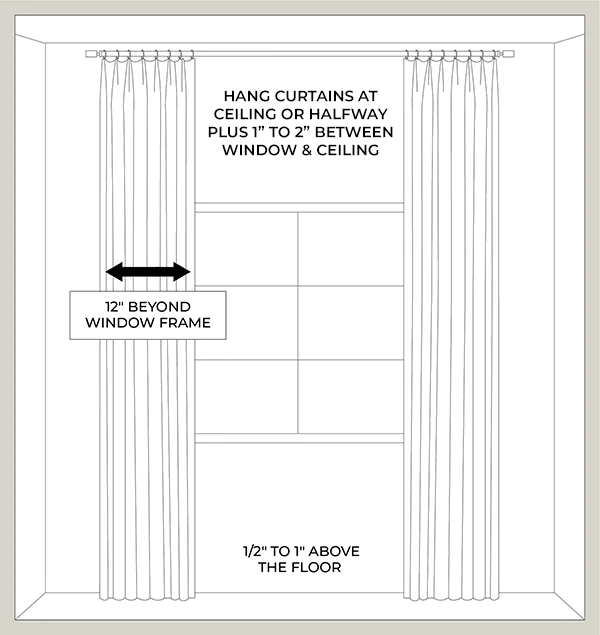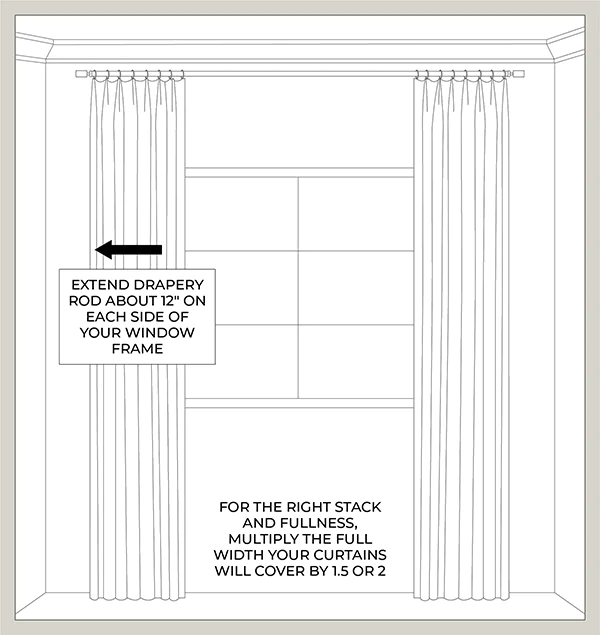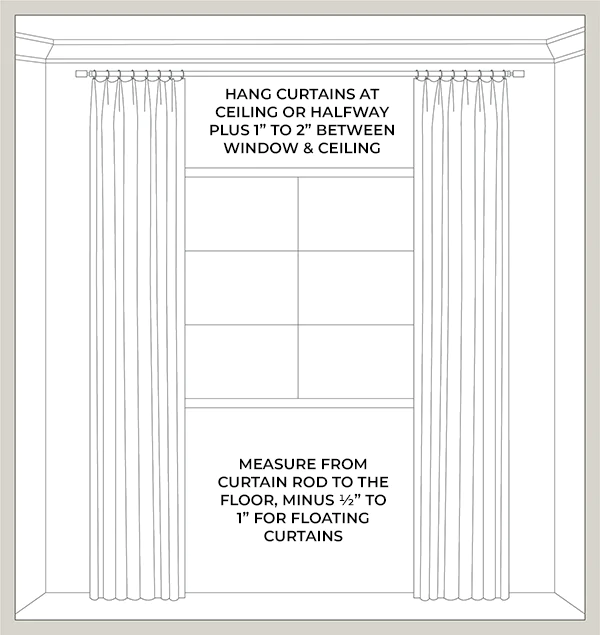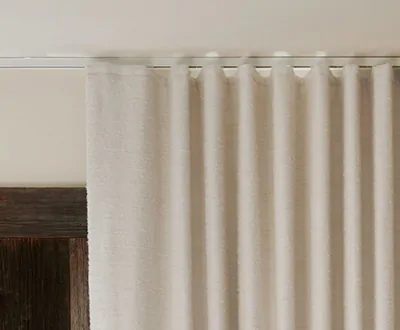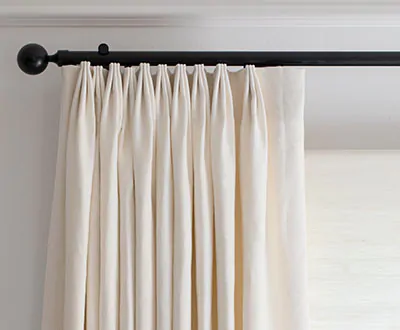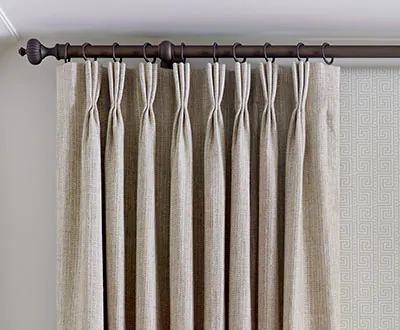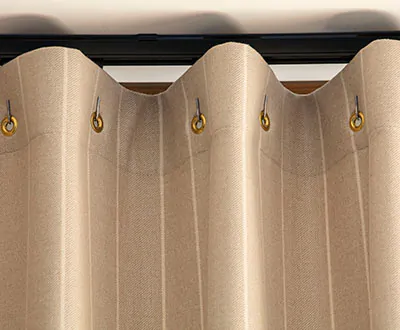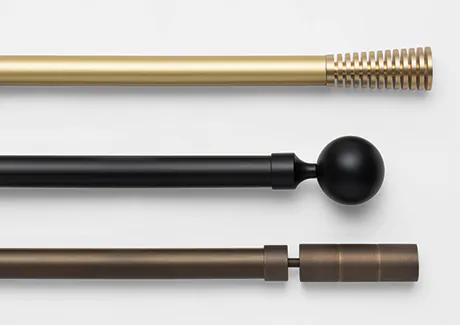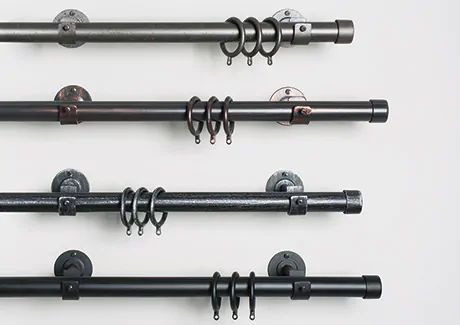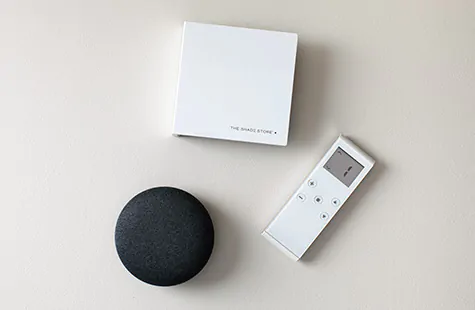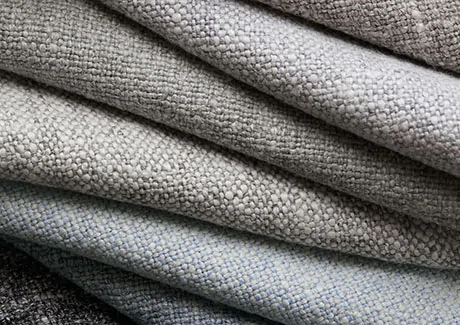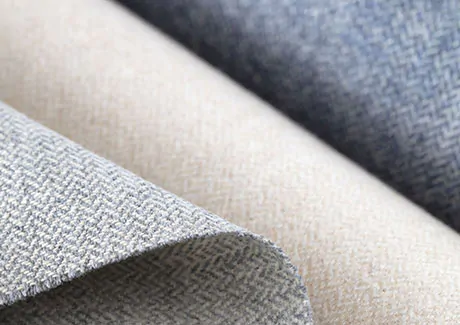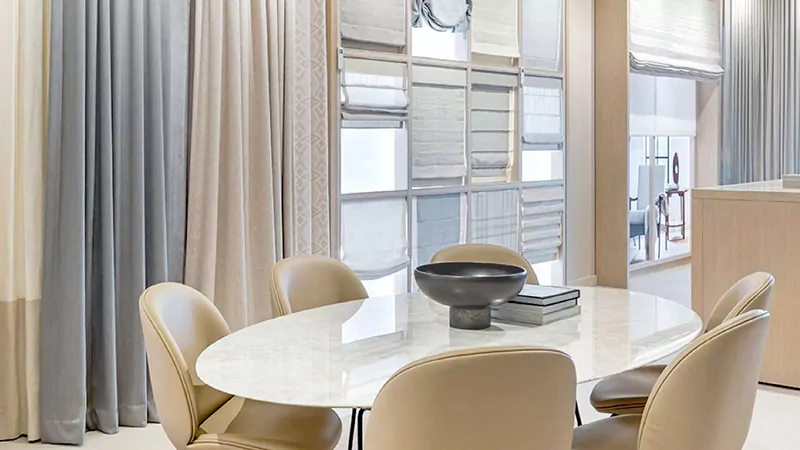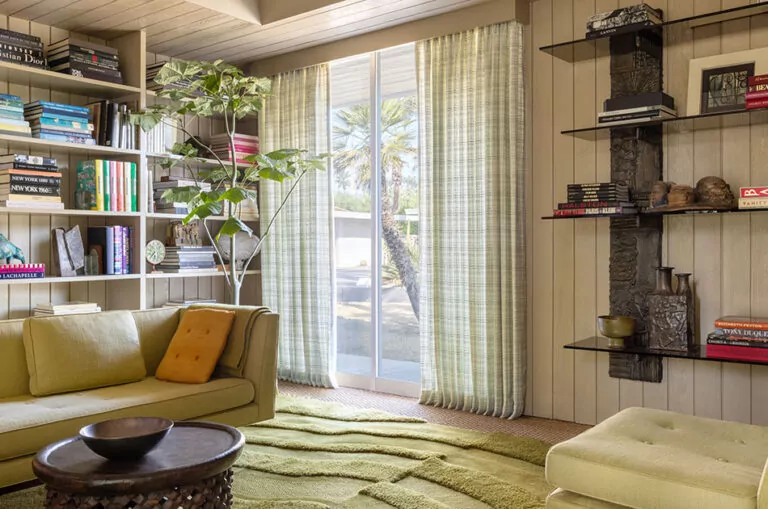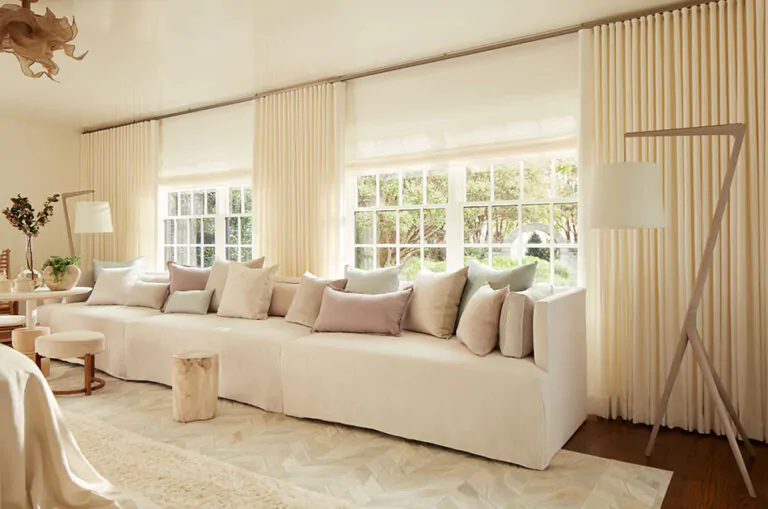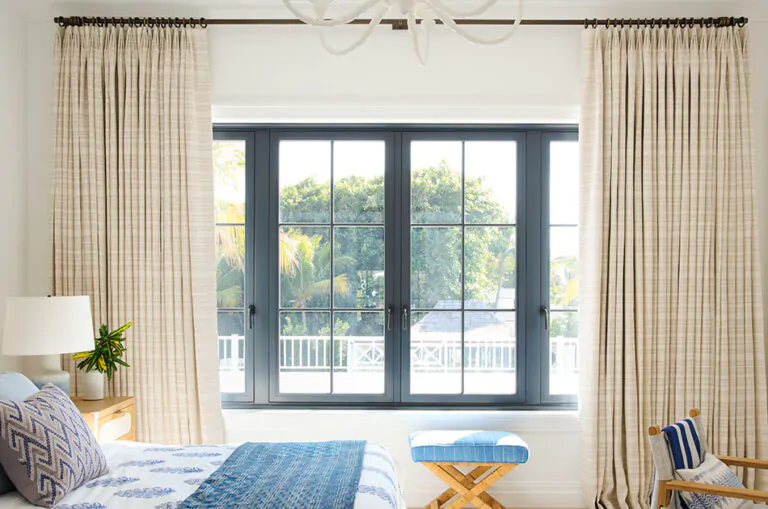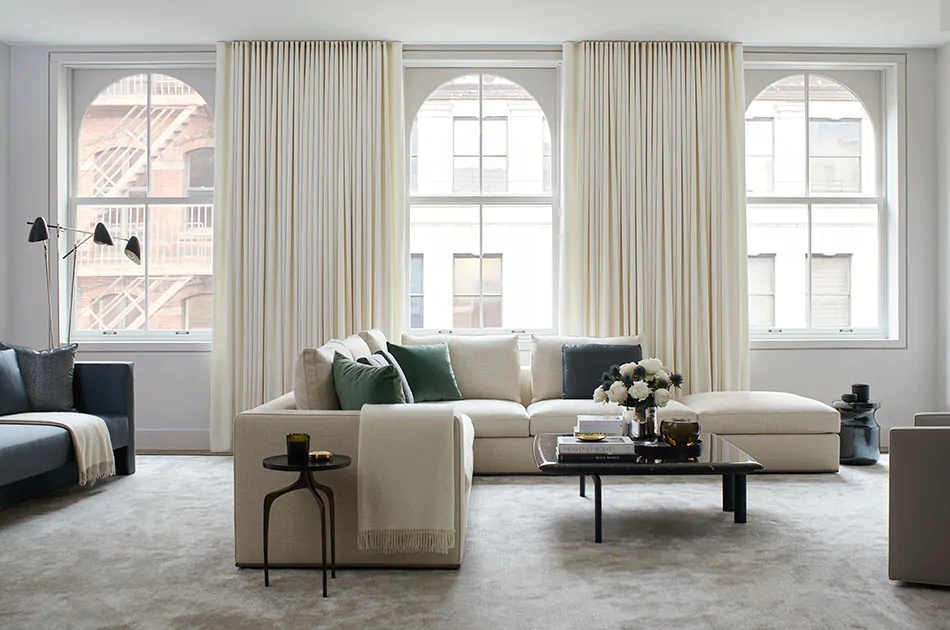
Best Thermal Curtains for Insulation
Window treatments have long been used for insulation, whether to keep spaces cool or warm. The right window treatments can even help lower your energy bills. In terms of insulation, thermal curtains are one of the best solutions, thanks to their thick fabric that traps hot or cold air at your window for a more temperate, comfortable interior temperature.
Thermal, or insulated curtains come in a variety of styles and materials, so how do you know which is right for your space? First, learn what exactly thermal curtains are and how they work. Then, explore product options and get tips on how to make the right selections for the best energy efficiency. Finally, learn how to order your drapery and get tips on installation and maintenance.
What Are Thermal Curtains?
Thermal curtains are drapery panels made from high-quality, thicker fabrics, like wool, cotton or synthetic fabrics, and feature privacy or blackout lining as well as interlining. Interlining is a cotton flannel insert between the drape fabric and lining that adds extra insulation to your thermal drapes.
Why Choose Thermal Curtains?
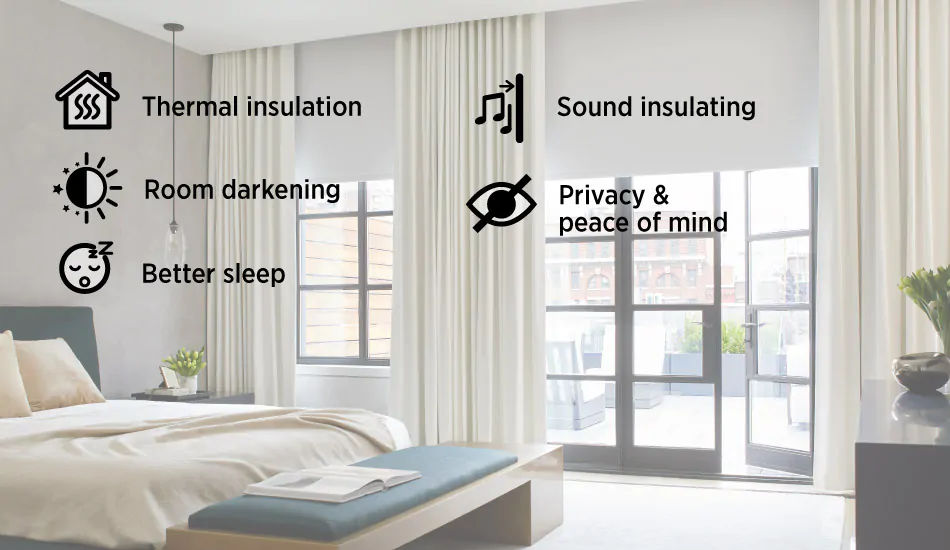
Thermal curtains offer several unique benefits beyond excellent insulation, including:
- Great privacy for peace of mind, thanks to the thicker fabric, and sometimes added lining as well, that blocks the view into your home.
- Room darkening for better sleep, so you wake up feeling refreshed, especially when you choose blackout lining for your already thick drapes.
- Sound insulation for a more tranquil space, since the thicker fabric and added lining absorbs sound.
Do Thermal Curtains Really Work?
In short, yes. Thermal curtains trap cold or hot air at your window which keeps it from circulating in your room, so your living area stays comfortable. The level of efficiency of your thermal curtains will depend on the fabric and lining chosen, as well as how you hang your curtains over the window to block the most airflow.
What Is the Difference Between Thermal & Insulated Curtains?
Both can be used to refer to curtains that help to trap cold air at your window and prevent a draft in your home. However, sometimes “insulated” can be used in terms of sound insulation, but it should be noted that thermal curtains also will naturally help with sound absorption thanks to the thickness of the material.
How to Order the Best Thermal Curtains
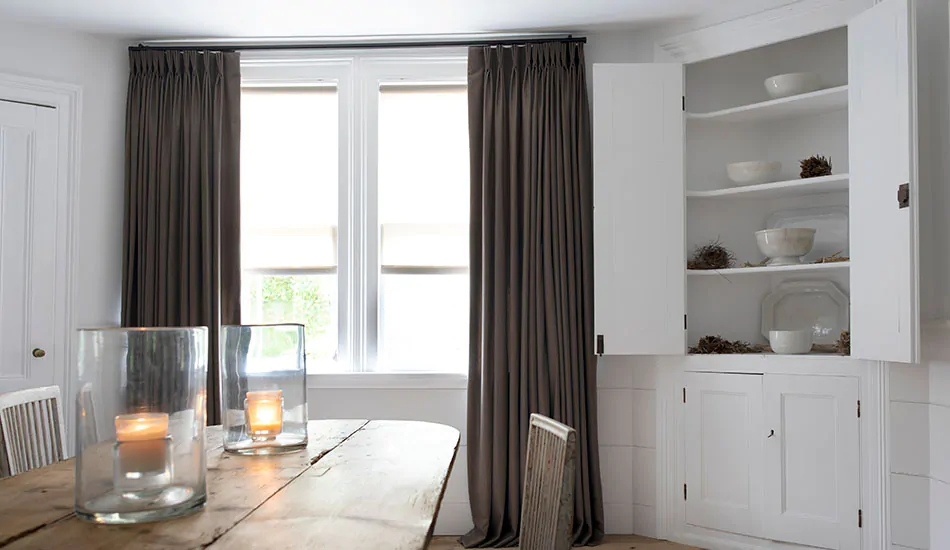
Now that you know what thermal curtains are and how they work, learn how to order the best thermal curtains for your space. Ordering thermal curtains is the same as ordering any type of curtain, but these steps specifically list the best selections to make for insulated drapes. However, there are other many options to choose from as well, depending on your preference.
STEPS FOR ORDERING
Step 1. Learn Best Practices for Hanging Drapes
Ordering will require measuring your window so you can select the right size premade panels, or for custom thermal curtains, you’ll be able to order panels that perfectly fit your measurements. For custom drapery especially, measuring appropriately will ensure your drapes accentuate your window and your room as a whole. To measure appropriately, it’s important to understand the best practice for hanging drapery.
These best practices will help guide your actual measurements:
Step 2. Measure for Ordering Length & Width
Now that you know the best practices for hanging drapery, learn how to measure your window for the ordering length and width of your insulated curtains.
Do Thermal Curtains Need to Touch the Floor?
For the best insulation, yes, your thermal curtains should touch the floor. This is especially important for cold climates, since cold air is heavier than warm air, it will naturally drop to the floor, so floor-length curtains will more effectively trap cold air at your window.
Step 3. Select Your Pleat Style & Hardware
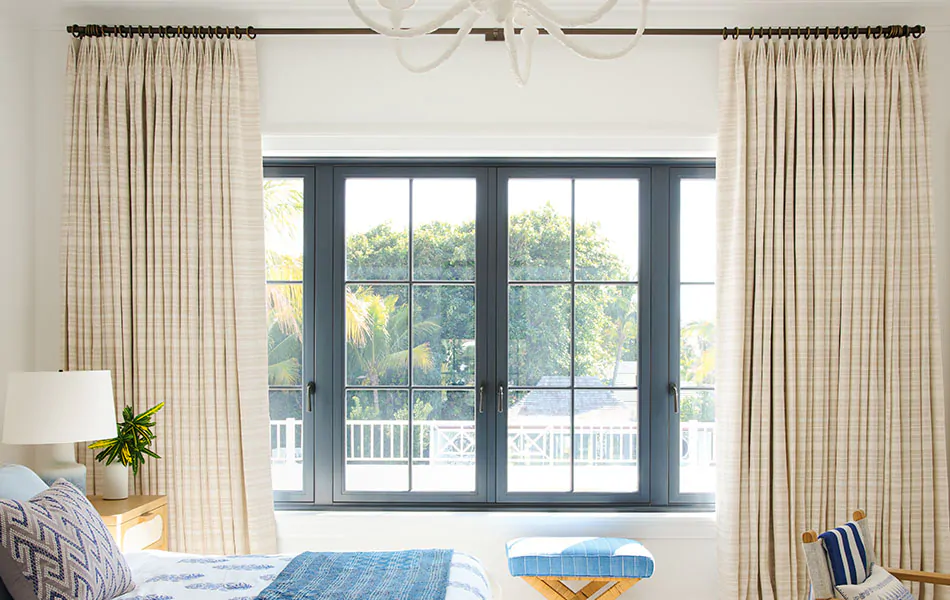
For thermal curtains to work the most efficiently, it’s important to have good functionality — and functionality depends on your pleat style and hardware selection. Your selections should allow you to easily close your drapery entirely over your window for the best insulation, but also allow you to open the drapery to take advantage of pleasant weather. For instance, you’ll also likely want to adjust them on sunny days during the winter to let the warm light in to warm your home or on summer nights to let in a cool breeze.
Learn more about your functional pleat style and hardware options to find the right fit for your insulated curtains.
Functional Pleat Styles
Functional pleat styles are those that are easily adjusted without any extra effort. Ideally, you’ll want pleat styles that are compatible with track system hardware, which allows the panels to glide effortlessly on the track for the easiest functionality.
Functional pleat styles include:
THE SHADE STORE RECOMMENDATION
For the best pleat style for insulation, we recommend Ripple Fold, Tailored Pleat or Pinch Pleat Drapery. These offer nice fullness (the thickness of the drapery when it’s pulled over your window), especially when paired with a thick fabric and lining. Cubicle Drapery, while easy in terms of functionality, is not nearly as full, so will provide slightly less insulation for your window.
Functional Hardware
Drapery hardware comes in two main categories: track systems and rod and rings hardware. In terms of functionality, track systems are your best bet. Learn more about each to solidify your choice.
THE SHADE STORE RECOMMENDATION
For the easiest functionality, we highly recommend a manual track system or a motorized track for your insulated curtains. Track systems are so easy to use and allow you to adjust your drapery as needed throughout the day and night to optimize your interior climate. Motorized track systems can even be automated with a timer to open and close according to your preferences.
Best Fabrics to Choose for Insulation
Explore this selection of some of the best fabrics to choose for insulated curtains.
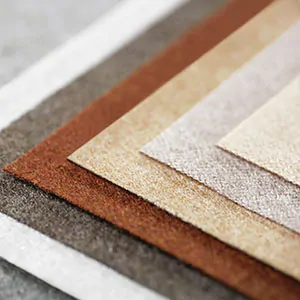
Holland & Sherry, Wool Flannel
A 100% wool fabric, Wool Flannel is thick and luxurious with a slightly brushed finish for a soft touch.
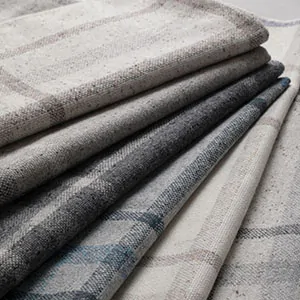
Aberdeen
A wool and synthetic blend featuring a luxe plaid pattern with an authentic woven texture.
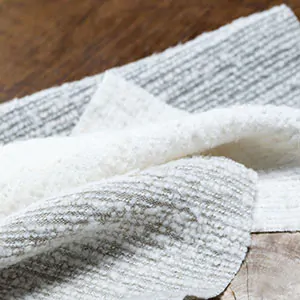
Nate Berkus,
Claude Stripe
A soft, inviting blend of linen, wool and synthetic fibers, with a luxe boucle stipe for visual and tactile texture.
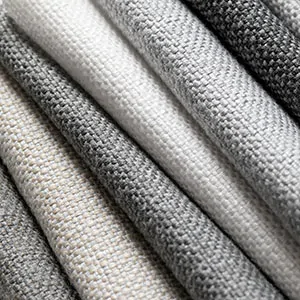
Sunbrella,
Alma
Made of 100% Sunbrella Acrylic, Alma features a heavyweight linen look with excellent durability.
THE SHADE STORE RECOMMENDATION
Wools and wool blends are really your best bet for insulation against the heat and cold. Wool is a unique material in that it is crimped, which means it creates tiny air pockets that trap air in the fabric and slow the transfer of heat. This keeps your home warmer in the winter and cooler in the summer.
Step 5: Add Lining
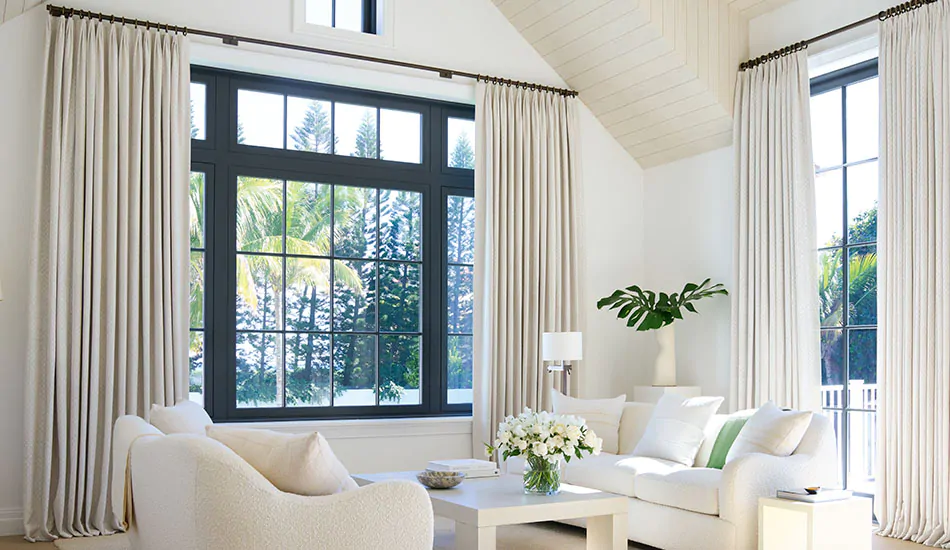
While lining is typically an optional choice for ordering custom drapery, for the best thermal curtains, it’s essential to pair your thick fabric with drapery lining.
Interlining with blackout lining will give you the best insulation against both the heat and cold, thanks to the blackout lining’s ability to block the hot sun and the interlining’s cold-blocking abilities. However, you can also pair interlining with privacy lining for a lighter look for your drapery and the potential for some soft light to filter through the fabric.
THE SHADE STORE RECOMMENDATION
Interlining is a must for thermal curtains. Whether you pair it with privacy or blackout lining is up to you, but the cotton flannel insert is essential for giving you the best insulating properties for your drapery.
Installation & Maintenance: A Brief Overview
If you’re considering a DIY installation for your thermal curtains, get an overview of the steps so you can gauge your comfort level with the job.
Installing Insulated Curtains
Installing your drapery will vary based on the type of hardware you’ve chosen, but in general, your steps will include:
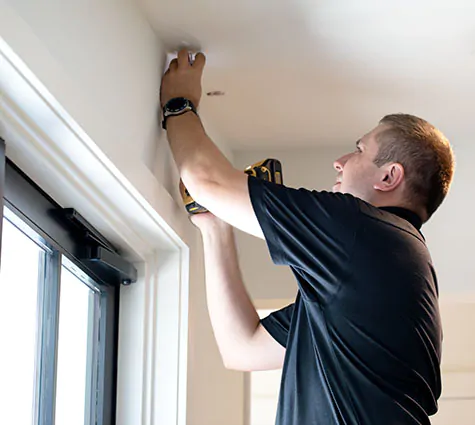
Step 1: Gather tools. You’ll likely need a stepladder, pencil, tape measure, level, drill and screwdriver, but check your drapery’s specific install instructions for an exact list.
Step 2: Measure bracket placement based on your hardware’s width. Be sure to check your drapery hardware install guide to ensure proper spacing of brackets.
Step 3: Install the brackets with the correct tools as indicated in the installation guide for your drapery hardware.
Step 4: Mount the rod or track system and hang your drape panels.
Maintenance
The exact care your insulated curtains will require will depend on the fabric, however, for all fabrics, there are a few best practices:
- Use a low-suction handheld vacuum to regularly remove dust and dirt from your drapes.
- For stains, we recommend contacting a professional window treatment cleaning specialist who will likely be able to treat your drapery onsite, without taking it down. If you can’t find a window treatment cleaning specialist, consider taking in a swatch of the material to your local dry cleaner to discuss your options.
Make Your Final Selections in a Showroom
With a better understanding of thermal curtains under your belt, you’re ready to consider your final selections and place your order. Visit a local showroom where you’ll find interactive product displays, swatches of all your fabric options, and more. Plus, you’ll meet our expert Design Consultants who can answer all your questions and guide you toward the right selections to optimize your insulated curtains while giving you a look you love.
